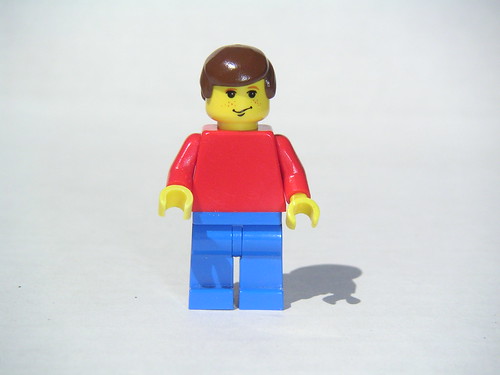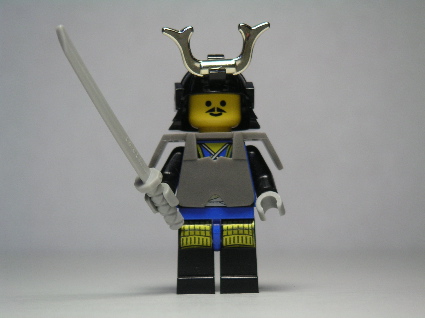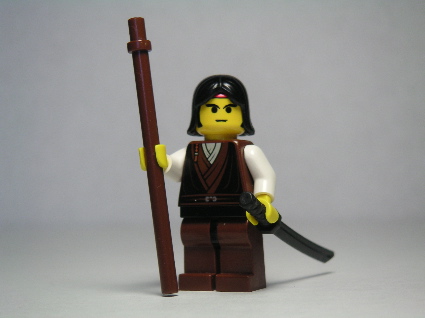(Today we’ll be introducing Joe Vig to Japanese LEGO builders. For an English introduction to Joe, read all about him on LUGNET.)
Brickshelf や LUGNET のヴィネット作品で、Joe Vig(ジョー・ヴィグ)という人物を見かけることがあります。ジョー・ヴィグとは何者なのでしょうか?今日は普通の和英の説明に変わって、ジョー・ヴィグを日本のレゴファンの皆様にご紹介したいと思います

ジョーは世界一アンラッキーで周囲に無頓着なレゴキャラなのです。彼は常に周りで何が起ころうとしているのか、わかっていません。強烈な電磁石のように悪運を引きつけますが、危険意識はゼロ!しかし残念ながら、今にも悪いことがおころうとしています。気をつけろ、ジョー!
ジョー・ヴィグの故事来歴:
ジョー・ヴィグはマイク・クラウリー氏(Mike Crowley)およびイリザリ兄弟ネルソンとパトリック(Nelson and Patrick Yrizarry)の意図に基づいているものです。元のアイデアは単純なレゴフィグを作り、Joe Food(食べ物ジョー)と名付け、付近のレストランで写真を撮ることでした。その写真をウェブに載してあちらこちらで現れてることを見せびらかしたかったのです。
いろんなことが重なってジョー・ヴィグは LUGNET のヴィネット作品の登場人物になりました。その結果で名前を「ジョー・ヴィグ」に変えました。(「ヴィグ」は「ヴィネット」の省略で、もちろん実在・架空の人物の名前ではありません。)
ジョー・ヴィグのアイデアには好意的な反響が大きく、間もなく世界中のレゴファンがジョー・ヴィグのヴィネットを作り始めました。2005年の6月にLUGNET .vignette グループの管理者たちは第一回 [ジョー・ヴィグコンテスト] を開きました。将来もジョー・ヴィグを多くの作品で見ることを期待しています。
ジョー・ヴィグの作り方:
さて、皆さんも自分のヴィネットにジョー・ヴィグを使ってみませんか?

ジョーはもちろんアレンジにも気がつかない人物ですが、頭、胴、足は上記の部品を使用してください。また、ジョーは帽子をかぶるのが好きですが、色は”白”に限られています。
次に何が起こるのか?!
ジョーに何が起こるかはレゴファンの皆さん次第です。このプロジェクトの目的は創造力とヴィネット製作を啓蒙することですが、大事なのは楽しむこと!です。
それでは、ジョーに何かが起こる直前を表現したヴィネットを作りましょう!ジョーが気づいていない、ということに注意!
(ネルソンさんが LUGNET のために書いた文章をもとにこの記事を書きました。LUGNET の新しい 日本語版を編集して下さった Izzoさんにも大変有り難く思います。)
The Brothers Brick is funded by our readers and the community. Articles may include affiliate links, and when you purchase products from those links, TBB may earn a commission that helps support the site.






















